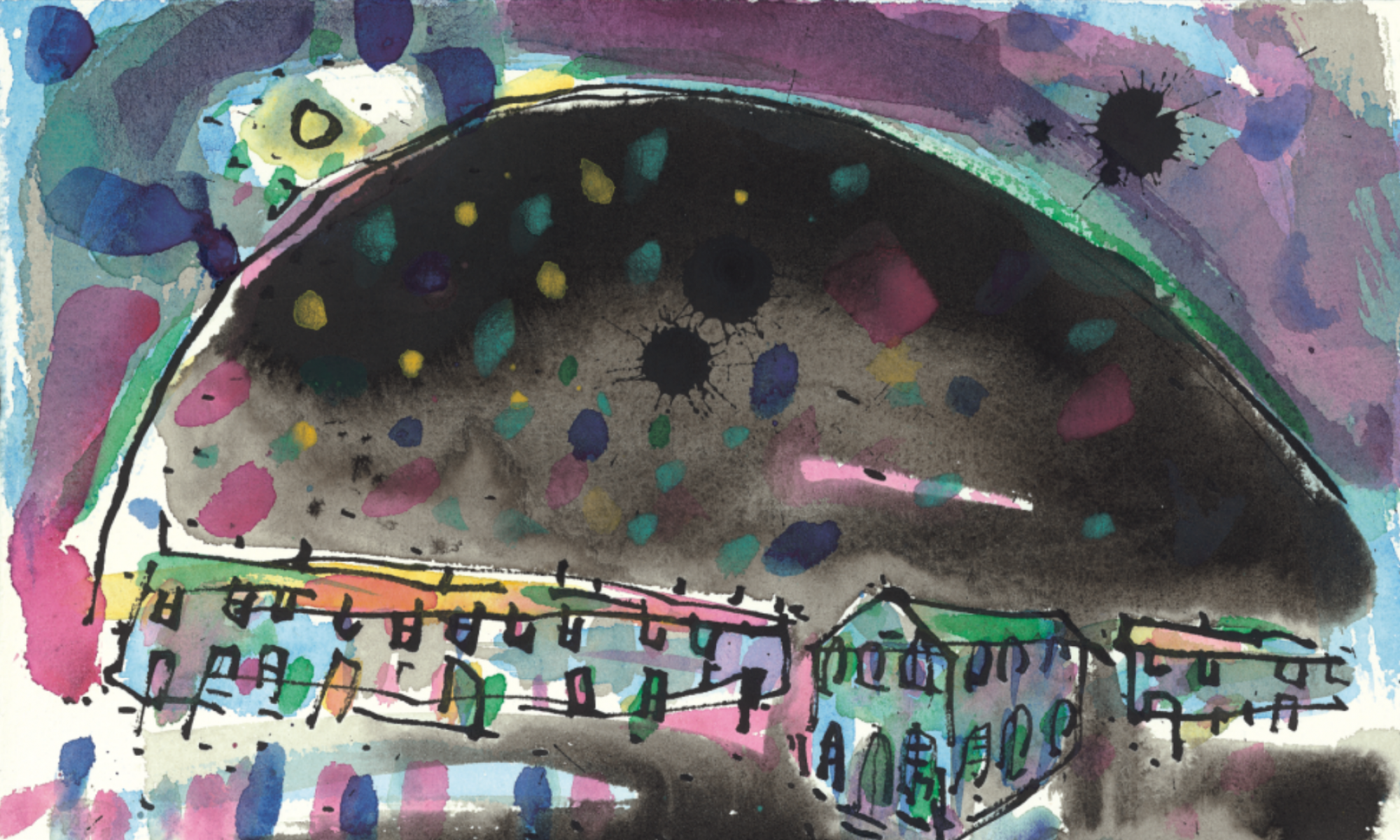Laura Gascoinge’s interview with William for Jackdaw.
William Brown
I first met William Brown when I went to interview him for Artists & Illustrators in 1998. His dealer David Solomon sat us down in the back of East West Gallery with two pints; William was too big to hide behind his. “What are you going to do to me?” he asked in the tone of someone addressing the wearer of a white coat. It turned out to be more a question of what he would do to me.
William Brown was a giant. He looked like one, with his big broad face and shaggy red beard, and he painted like one, boldly in bright colours. Having travelled for much of his life collecting folklore, he also bestrode the world in seven league boots. His conversations were typically conducted in a mixture of English, French and Welsh. This was just about comprehensible face to face, but turned into gobbledygook over the phone. The instinctive reaction on picking up the phone to William was to say ‘Wrong number’ and put it down again. His letters, though, were always a delight when they arrived in envelopes covered with rubber stamps and scribbles, weeks late if at all (he didn’t do postcodes). Deciphering them could be a struggle – in the margin of one I found I’d written, “Speak English, damn you!” – but behind the nonsense lay a deep fund of wit and wisdom. Here, from the pad I took to that interview, are some examples.
On lies and myths –
“Artists have to be nosey, to read, to remember or half-remember. Lying is important too: read ‘lie’ for ‘myth’. If I say I’m scared by a cat and it’s the size of a fridge and has wings, then it’s a myth not a lie, so it’s OK… I steal ideas, usually from children (because they’re smaller). I refer to poetry, especially 19th century French: Rimbaud, Baudelaire, Villon – all liars.”
On watercolour –
“It’s an interesting little science. You know when people say ‘It’s like watching paint dry’… I can’t think of anything more interesting than watching paint dry, it performs for you. Did you know that if a colour is poking up through another it’s described as ‘grinning’? I don’t want to mystify painting but it’s the most rewarding of things. It has a life.”
On arts council administrators –
“I prefer to work for a commercial gallery. Arts Council galleries have no desire to sell. They will sit and daunt the public… We need to deadhead a bit here and there, that’s how you produce blooms. It may sound corny, but we want a handful of people who actually like pictures – enthusiasts, to use an old-fashioned word. There should be a five-year contract for them – they leave feet first in these jobs. Most of them had some impulse towards being creative and have been subjected to about 25 years of meetings. They become completely enervated by the job.”
On the idea of ‘art in the community’ –
“Where have I been? Have I been living in a cave for the past 20 years?”
On the obligation to perform –
“Je fais mon cirque. I won’t receive my stipend from the education department unless I perform. I don’t want to do two weeks’ Face Painting with Uncle William. I don’t want to work with children, old people and inadequates, I am one.”
On art and memory –
“All art is about recognition, it’s all remembered. Memory is the defining human trait – association and memory. There’s an eidetic thing at the back of the head that says, ‘Don’t cross the road now, there’s a bus coming.’”
On drawing –
“I draw like people knit, I can sit at a table and do 200. I’ve a 10% success rate with drawings. Editing is the most important. Stream of consciousness is all very well, but the critical faculty is central. It’s knowing when to stop, knowing which one.”
In the middle of my notes there’s a biro drawing by William of a pig with a curly tail under an iron bridge. At the time, he was working on a series of pictures inspired by Debussy’s La Cathédrale Engloutie, which showed a little church from Guarbecque in Pas de Calais descending apocalyptically out of a cloud onto Newport Transporter Bridge. In the pig drawing he was toying with the idea of a visual pun on Newport Transporker Bridge. The critical faculty edited that out, but happily not before it got into my notebook.
Laura Gascoigne
